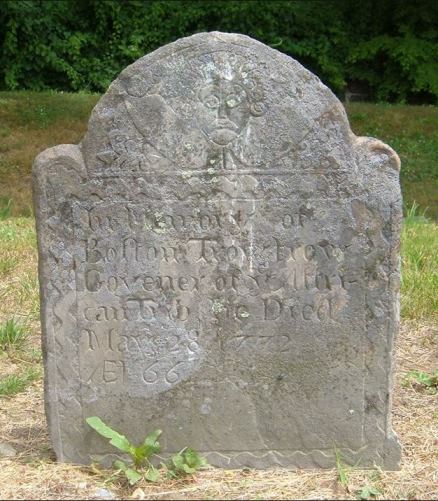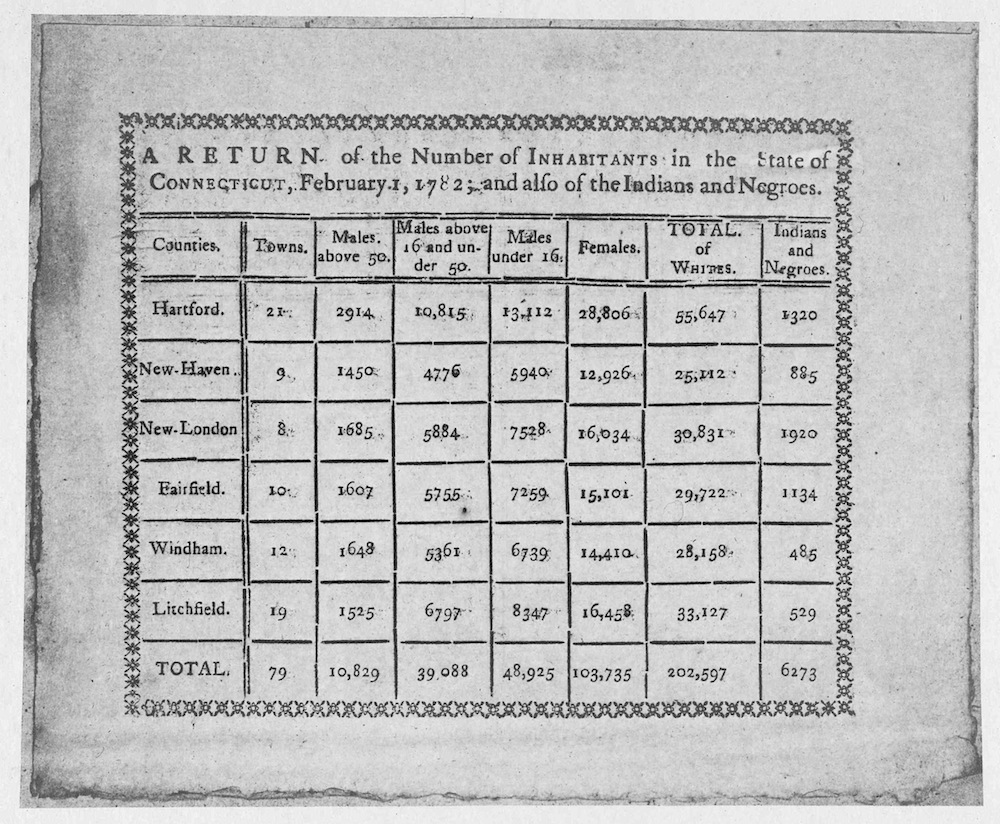by Andy Piascik
For approximately one hundred years, from the middle of the 18th century to the middle of the 19th century, there was a black governor in Connecticut. Selection of a leader was an African tradition brought by black slaves to the British colonies and the practice became formally established in Connecticut in the 1750s. Despite its democratic origins, powerful whites usurped the position and used governors largely to help “maintain order” within the black population.
Historical accounts indicate the practice began in towns and that there were often several black governors in the state. The election of black governors was a formal affair with meetings, dinners, and a parade complete with dress clothes provided by white masters. Some blacks even donned white wigs—then popular among colonial magistrates and legislators.

Gravesite of Boston Trowtrow, Old Norwichtown Cemetery, a site on the Freedom Trail. The inscription reads: “In Memory of Boston Trowtrow Govener of ye Affrican Trib he Died May 28 1772 At 66.” – Added by Jan Franco to FindAGrave.com. Used through Public Domain.
Black Governor Candidates
The only candidates considered for office were men, and there was an understanding that they also needed to be deemed respectable by whites before being allowed to run for election. It seems also to have been understood by all that the white power structure intervened as needed at any hint of a challenge to the status quo. White oversight continued and perhaps even intensified when the colonies plunged into war after the battles of Lexington and Concord.
In 1776, for example, with Connecticut’s government in the hands of the revolutionaries, a slave named John Anderson became black governor after his predecessor, who decided to step down, selected him. Philip Skene, a major in the British colonial army, who was in a Hartford prison at the time under suspicion of hostility to the new revolutionary government, owned John Anderson, and Anderson’s appointment aroused concerns that the move was a plot masterminded by Skene to incite blacks to side with the British.
An investigation determined that was not the case but also revealed that Anderson’s predecessor, a slave known as Cuff, appointed Anderson despite the blacks Cuff consulted indicating they did not want Anderson because his master was loyal to the British crown. In addition, Anderson confessed that he paid money to some of the same blacks to entice them to either go along with his selection or to vote for him in the event of an election. The insurgent government in Hartford appeared unbothered by the attempted vote buying and bypassing of the usual election procedure as long as Anderson was not in league with their British enemies. Anderson served a four-year term.
Power Structures
Historical accounts indicate the black governors had little, if any, significant independent power, as any punishment of blacks suspected of wrongdoing required the tacit approval of the white power structure. And though the governors provided mediation between blacks and whites, they had absolutely no power to discipline a white person who wronged a black.
This changed to a marginal degree as Connecticut began a process of gradual emancipation in 1784 and as the movement for full equality for blacks throughout the new nation grew ever-stronger in the 19th century. Overall, though, the primary task of the governors largely remained maintenance of the unequal status quo. The last known black governor in the state was Wilson Weston, who oversaw the black community in Seymour beginning in 1855.
In 1998, largely through the efforts of three middle school students, the city of Hartford erected a monument at the Ancient Burying Ground where it is believed more than one hundred blacks remain buried. Among those believed buried there were five Connecticut black governors.
Bridgeport native Andy Piascik is an award-winning author who has written for many publications and websites over the last four decades. He is also the author of two books.









